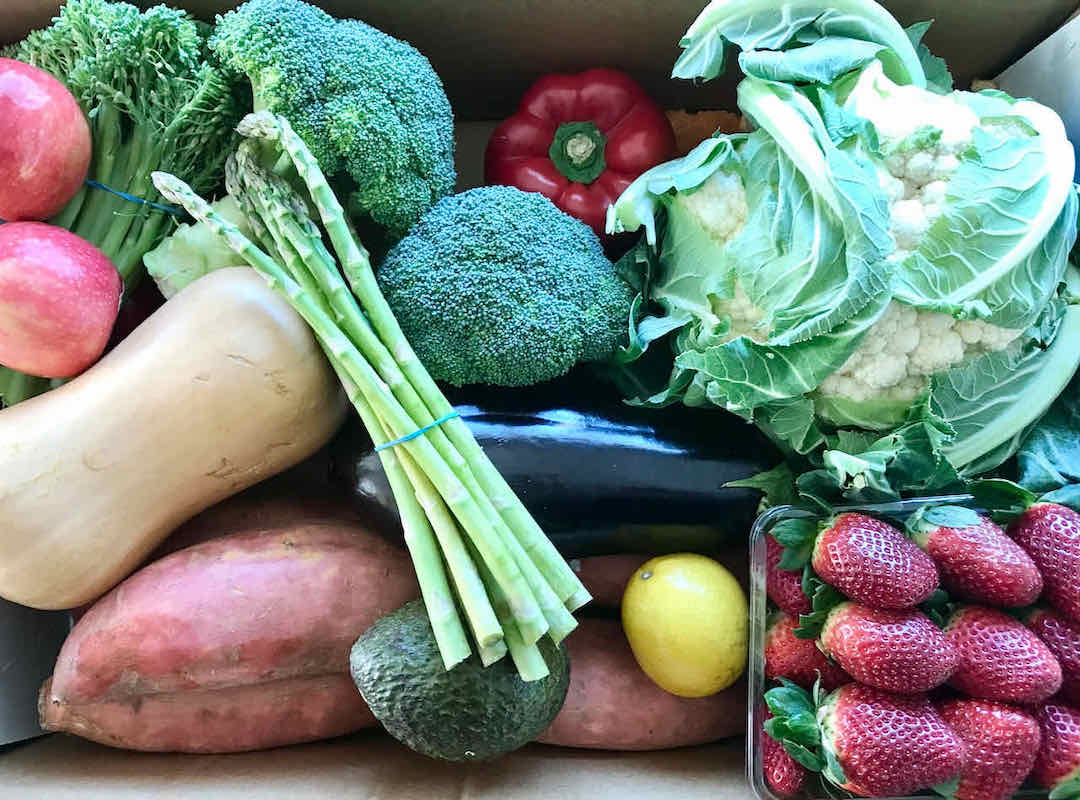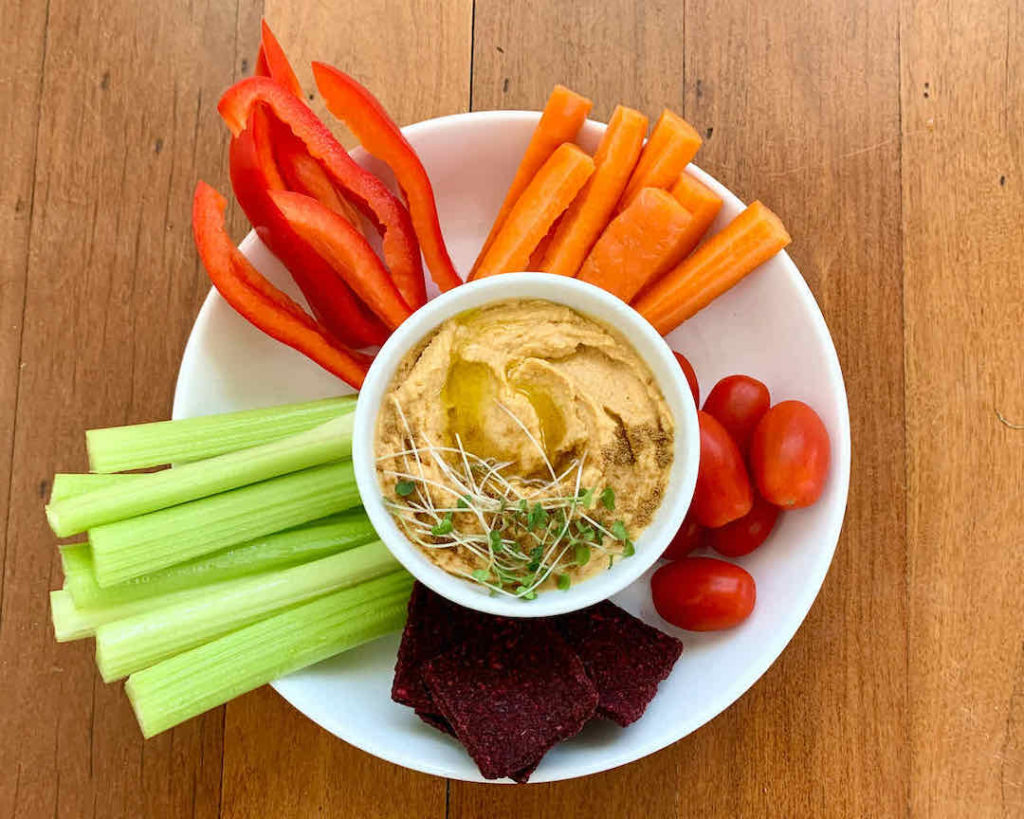The struggle of getting vegetables into kids is real! Although as parents and caregivers, if we are dishing up a variety of vegetables and legumes each day, we can be confident we have done our part. The rest is up to the kids.
As adults we know that vegetables are important for providing us with key nutrients needed for maintaining our health and wellbeing. Yet 90% of us aged over 19 aren’t meeting our required daily vegetable intake of 5-6 serves each day. With so few of us adults leading by example when it comes to eating vegetables, it is easy to see why children are lagging behind too. It’s pretty alarming to know that 99% of children aged 2-18 are not eating the minimum required amount of vegetables each day.(1)
Why do children need to eat vegetables?
We understand that people who eat more vegetables as part of a healthy diet have a reduced risk of chronic diseases such as heart disease and some cancers. While this may seem like a long-term concern for kids, good habits can start young. We know that kids who are able to start eating vegetables early in their life will usually continue this healthy eating habit into adulthood. Teaching kids to eat vegetables from a young age is one of the greatest gifts you can give them – although as many of us parents will tell you, this is not something that can be done overnight. Vegetables are a great source of fibre, polyphenols, antioxidants and phytonutrients. They are lower in kilojoules/calories compared to many other food sources and provide a decent amount of fibre to keep you feeling full and satisfied. Plus there are some vegetables such as asparagus, artichoke, onion and garlic and legumes such as chickpeas and lentils that are great sources of prebiotics. Prebiotics selectively feed beneficial microorganisms in your gut to support gut and brain health.
When we are eating sufficient vegetables in the diet we are also reducing our discretionary food intake of foods that are high in fat, sugar, sodium and low in fibre and nutrients.
How many vegetables should my child eat each day?
The recommendations around vegetable intake in Australian vary by age and gender with a typical serving size being approximately half a cup of cooked vegetables and a cup of raw salad or salad leaves. The daily minimum recommendations listed below:
- 3 years: 2 1/2 serves of vegetables per day
- 4-8 years: 4 1/2 serves of vegetables per day
- 9-11 years: 5 serves of vegetables per day
- Males 12-18 years: 5 1/2 serves of vegetables per day
- Females 12+: 5 serves of vegetables per day
- Males 19-50: 6 serves of vegetables per day
- Males 51-70: 5 1/2 serves of vegetables per day
- Males 70+: 5 serves of vegetables per day
Ten tips to get kids to eat more vegetables
So we know vegetables are important but how can we get them in the mouths of more children without a screwed up nose? Here are ten tips to getting children to eat more vegetables:
1. Be a role model
Children learn eating behaviours from their parents, caregivers and peers so setting an example when it comes to eating is one of the most important lessons you can teach. This means eating vegetables yourself and taking the time at meal times to sit down and eat with children undistracted. Kids are clever and as many parenting experts will tell you it is very hard to gain buy in without modelling the behaviour yourself.
Another reason for pregnant mums or mums with infants to be a role model is that infants develop tastes to different flavours by initial exposure through the mother’s diet. Infants are exposed to a variety of flavours from the mother’s diet through breastfeeding and amniotic fluid when in utero (1).
Interestingly research has shown that mums who drank carrot juice during their third trimester of pregnancy had infants that enjoyed eating carrots more during weaning (2).
This means getting in a wide variety of vegetables and flavours during pregnancy is recommended. Especially the bitter flavours from the leafy greens like broccoli, cabbage, kale and Brussels sprouts (1). While pregnancy can be a tough time to eat well consistently with all the nausea, fatigue, cravings and morning sickness it is about doing the best you can on your good days.
2. Serve vegetables with every meal and snack
The easiest way to help kids get enough vegetables eat day is to serve them with every meal and snack. For many three year olds sitting down to two and a half cups of salad leaves or 1 1/4 cup of cooked vegetables can seem overwhelming. Although if you can space this out over an entire day it seems much more manageable. Vegetables to serve alongside snacks could include beans, edamame, diced avocado or tomato, or vegetable sticks like carrot, capsicum, celery or cucumber.
3. Make mealtimes pleasant by trusting your child to eat
Kids may not always choose to eat the vegetables provided at every meal but you can feel confident in knowing you have done your part by providing a nutritious meal. For those of you not familiar with the division of responsibility this is good to concept get your head around as it can help ease the pressure on tense mealtimes. The division of responsibility was developed by Ellen Satter and is all about the adult being responsible for when, where and what is served at each meal time and the child being responsible for whether it is eaten and how much.
4. Introduce vegetables first
If you are a new mum or dad this one is especially for you. Introducing vegetables to your infant before you introduce sweeter foods such as fruits will help your child develop a taste for more bitter tasting vegetables and be more likely to enjoy a wider variety of vegetables. We often want to rush in with the stewed apple and banana when it comes to introducing foods, especially once you see the huge grin response to sweetness and natural sugars. Although having a structured approach to food introduction starting with vegetables first works best for infants and will work best for you in the long-term.
Yet if this ship has already sailed for you as it has for me, it isn’t too late. You can simply cut up a few vegetable sticks and serve on the bench as the kids are hovering around the kitchen while you’re preparing lunch or dinner. You could use carrot, cucumber, capsicum, celery, tomato that are great for snacking on and getting some veggies in first.
5. Add extra vegetables to some our your existing family favourites
For most of us serving up a huge plate of vegetables will often be met with a screwed up nose but if you are serving vegetables with something tasty the kids enjoy they will be more likely to eat or at least try the vegetables on offer. This isn’t about feeling you need to sneak vegetables into every meal, but more about starting from where you and the child you are feeding are at. If pizza is a family favourite, start there and add some chopped spinach or capsicum or try a cauliflower base. If lasagne is what your child is into then try adding some cauliflower puree to the sauce or extra vegetables like onion, capsicum, carrot and greens to the tomato sauce. Some other good places to start could be adding lentils, carrots, mushrooms or zucchini to spaghetti bolognaise, beans or capsicum to mexican dishes or a handful of spinach or kale to smoothie favourites.
6. Get some variety by eating the rainbow
If you find you and the kids are often eating the same meals with the same vegetables each week it is time to add in some variety. Vegetable diversity is important for providing a diverse range of fibres to support gut health and digestion. Different coloured vegetables – think red, purple, blue, green, yellow, orange, brown and white – are good at providing different phytonutrients needed to help fight sickness and disease. This is why it is recommended to get lots of colour on your plate and eat the rainbow. You can get the kids involved by getting them to choose a new vegetable to try each week. Giving them some responsibility to choose a vegetable also helps them feel empowered when it comes to meal times and more likely to eat what they have selected.
7. Get kids involved with meal preparation and cooking
Alright so as a parent this is definitely not the most efficient way to feed the family but it can be lots of fun. So clear some time and expectations and enjoy some time in the kitchen with the kids. Getting kids to help get the ingredients from the fridge and cupboard, prepare the food, stir and mix is a great opportunity to teach them about vegetables, food and cooking. The added bonus is when they see their hard work on display, they will be more inclined to try and eat what has been served.
8. Take the kids shopping
Alright again, not the quickest and definitely not the easiest way to get through the supermarket, market or health food shop. But i really do think that sometimes this is worth the headache for what you can teach kids about healthy eating and the importance of eating vegetables. It doesn’t have to be every time but when you do shop with a child talk to them about how to navigate the food aisles, how to choose whole foods and get them involved by choosing the vegetables. The more exposures a child has to different vegetables, the more familiar they will become with a wide variety of vegetables and the less resistant they will be when they show up on their plate.
9. Get creative with vegetables
For some children presentation can go a long way and getting creative with how you prepare, serve and incorporate vegetables into meals can make all the difference. Sprialising zucchini to serve instead of or alongside spaghetti or pasta, creating faces with tomato, capsicum, spinach and onion on pizza, making shapes with cucumber, carrots, tomato and beans for salads can all be a bit of fun.
10. Add a dipping sauce
This is the final tip as this is pretty much the last resort when it comes to getting more vegetables in. I usually prefer for kids to eat vegetables without a dipping sauce so they can become familiar with the different textures, flavours and tastes of vegetables. Although if you are really struggling and getting the vegetables in is the priority, adding a dipping sauce may help and be the difference between trying and not trying at all. Think of trying balsamic dressing, lemon and extra virgin olive oil dressing, hummus, babaganoush or mayonnaise on salads. I also find serving nut or seed butters or dips such as hummus, babaganoush, beetroot dip alongside vegetable sticks to work quite well too.
Getting kids to eat more vegetables isn’t always going to be easy. There will be days they may not be interested, may not be hungry or may just may downright not like what is on offer. But on these days don’t feel obliged to provide alternative options out of fear of malnourishment as this will only encourage their resistance. I think it is always important to put it into perspective by remembering that you are working towards the long-term goal of raising a healthy child who can eat a diverse range of vegetables. If you have fulfilled your role of providing nutritious food choices, that is all you can do and the rest is up to the kids.


